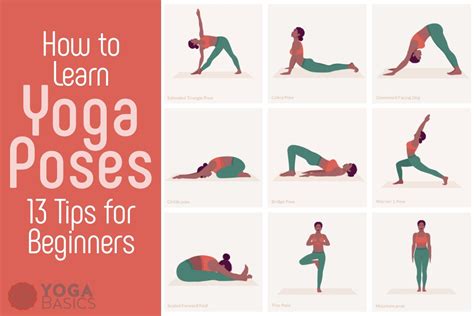Unlocking the Power of Visualization in Yoga: A Comprehensive Guide
Yoga is widely recognized for its physical benefits, including improved flexibility, strength, and balance. However, one often overlooked yet highly transformative element of yoga is the practice of visualization. By incorporating mental imagery, practitioners can deepen their practice, enhance focus, and achieve personal growth in ways that transcend physical movement. In this article, we explore how visualization can be used effectively within yoga to achieve a well-rounded, mentally enriching experience.
Introduction: Why Visualization Matters in Yoga
Visualization in yoga involves using mental imagery to enhance physical, mental, and emotional benefits. While yoga is traditionally thought of as a physical practice, integrating visualization taps into the mind’s potential to accelerate progress, improve mental clarity, and strengthen the connection between the mind and body. This article explores how visualization enhances yoga’s effectiveness, its relevance for beginners and seasoned practitioners, and how to apply it practically.
Key Concepts of Visualization in Yoga
Visualization can be broken down into key concepts that are essential to understanding its role in yoga:
- Mind-Body Connection: Visualization reinforces the mind-body connection by encouraging mental focus on specific body parts or movements.
- Imagery Practice: Mental imagery of movements or goals (e.g., balancing in a pose or visualizing calmness) strengthens the ability to perform these tasks in reality.
- Intention Setting: Visualizing goals before practice helps direct energy and focus, making the practice more purposeful.
- Positive Affirmation: Using visual affirmations boosts confidence and removes mental barriers to achieving difficult postures or meditative states.
Historical Context: Visualization and Yoga in Ancient Traditions
The idea of visualization is not new. Historically, yogic traditions in India have long included forms of mental focus and visualization to accompany physical practice. Texts like the Yoga Sutras by Patanjali emphasize the power of dhyana (meditation) and mental concentration. In ancient yogic schools, visualization was considered essential for achieving higher states of consciousness, where the practitioner visualized deities, symbols, or specific outcomes. These practices were foundational to achieving inner stillness and spiritual growth.
Current State Analysis: How Visualization Enhances Modern Yoga Practices
In contemporary yoga, the application of visualization often goes beyond spiritual goals, focusing on physical and mental performance. Modern research supports the idea that visualizing specific movements or postures can help practitioners improve their performance, especially when faced with difficult asanas. Studies in sports psychology, for example, show that athletes who use visualization techniques perform better, which directly applies to yoga. The mental imagery primes the nervous system for actual movement, improving motor function and reducing the risk of injury.
Practical Applications: How to Integrate Visualization into Your Yoga Practice
For those looking to integrate visualization into their yoga routine, here are some actionable steps:
- Start with Breathwork: Before beginning a yoga session, visualize your breath flowing through your body, nourishing each cell. This primes the body for movement.
- Visualize the Pose: During challenging poses, mentally rehearse the position. Imagine how your body feels in perfect alignment before you physically enter the pose.
- End with Intentions: Use the end of your practice to visualize your goals for the next session or your broader life intentions. This deepens the mental impact of the practice.
Case Studies: Success Stories Using Visualization in Yoga
The benefits of visualization in yoga are not just theoretical. Below are real-world examples of practitioners who have enhanced their yoga practice through visualization:
| Practitioner | Challenge | Visualization Technique | Result |
|---|---|---|---|
| Emily (Beginner) | Difficulty with balance in tree pose | Visualized herself as a sturdy tree rooted in the ground | Improved stability and confidence in balancing postures |
| Jason (Intermediate) | Struggling with handstands | Mental imagery of perfect handstand alignment | Increased body awareness and strength in inversion practice |
| Priya (Advanced) | Breaking through mental blocks in meditation | Visualizing clear skies and mental calm | Achieved deeper states of meditation with fewer distractions |
Stakeholder Analysis: Who Benefits from Visualization in Yoga?
Several groups stand to benefit from the practice of visualization in yoga:
- Beginners: Visualization can help newcomers overcome anxiety and develop greater body awareness.
- Advanced Yogis: For experienced practitioners, visualization can help push through plateaus and achieve new levels of flexibility, strength, and mindfulness.
- Instructors: Teachers can use visualization as a tool to guide students mentally through challenging poses and to enhance their teaching methods.
- Health Professionals: Physical therapists and psychologists may incorporate yoga visualization into rehabilitation programs to improve motor skills and reduce stress.
Implementation Guidelines: Steps to Begin Incorporating Visualization
Implementing visualization into your yoga practice requires a gradual approach. Here are guidelines for effective integration:
- Start Small: Focus on visualizing the breath at the beginning of each session before gradually adding more complex imagery.
- Combine with Pranayama: Link visualization to breath control for a deeper experience.
- Use Visual Anchors: In balancing poses, mentally picture roots growing from your feet to stabilize yourself.
- Guided Visualization: Follow a guided yoga visualization audio or video to train your mental imagery.
- Reflect and Adjust: After each session, reflect on how visualization affected your practice and make adjustments for the next time.
Ethical Considerations: Responsible Use of Visualization
While visualization is a powerful tool, there are ethical considerations to keep in mind:
- Avoid Overuse: Relying too heavily on visualization can detract from the physical reality of yoga. Balance is essential.
- Inclusivity: Visualization must be inclusive. Ensure that imagery is adaptable to different body types, abilities, and goals.
- Respect Boundaries: Visualization should not force individuals into extreme physical challenges. It is essential to maintain mindfulness and respect for one’s limits.
Limitations and Future Research: Gaps in Knowledge and Potential Studies
Although the benefits of visualization in yoga are supported by anecdotal and scientific evidence, several limitations remain:
- Limited Empirical Studies: There is still a lack of large-scale, longitudinal studies on the direct effects of visualization in yoga practice.
- Variability in Effectiveness: Visualization may not work equally well for all individuals due to differences in cognitive abilities and personal preferences.
- Future Directions: Research could explore the neurobiological mechanisms behind visualization in yoga and how specific visualizations impact various aspects of the practice (e.g., flexibility, focus, emotional regulation).
Expert Commentary: Insights from Thought Leaders in Yoga and Psychology
Experts in the fields of yoga and psychology offer unique insights into the role of visualization in yoga:
“Visualization is a crucial part of any mindful movement practice. It enhances not only physical outcomes but also the mental and emotional benefits that practitioners gain from yoga. When we visualize, we are aligning the mind with the body, creating a synergy that is greater than the sum of its parts.” — Dr. Rachel Moore, Psychologist and Mindfulness Instructor
“The power of the mind in movement practices like yoga cannot be overstated. By visualizing success, whether it be in a difficult pose or maintaining focus, you set yourself up for a smoother, more enjoyable experience. It’s all about cultivating that internal harmony.” — Swami Anand, Yoga Guru and Author








